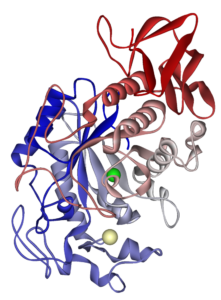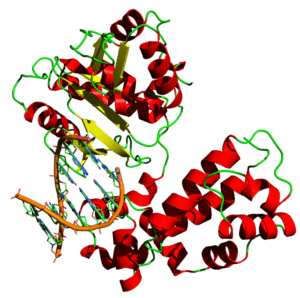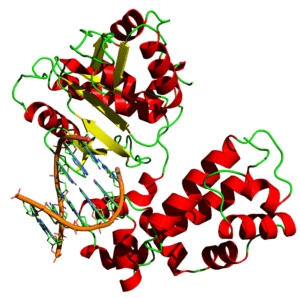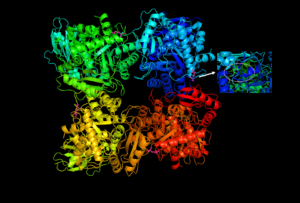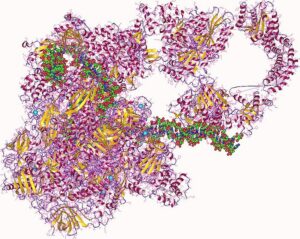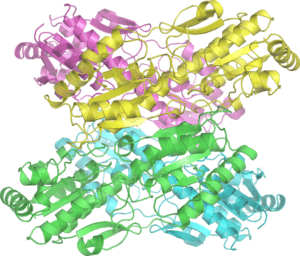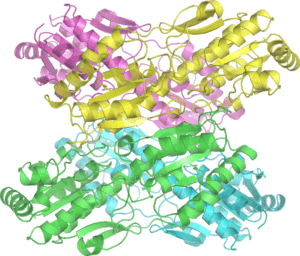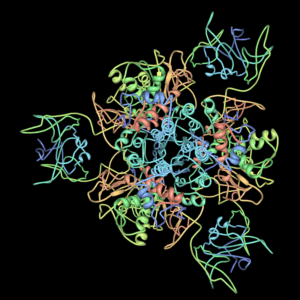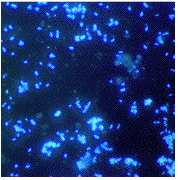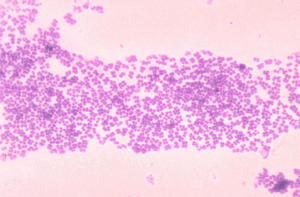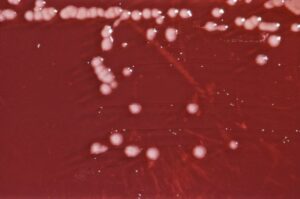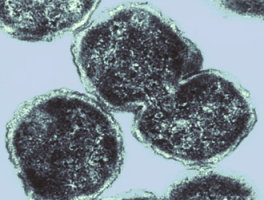Amylase is an enzyme that aids in the conversion of starch to sugars. There is a detailed description of amylase enzyme example provided.
Amylase is an enzyme that catalyzes the hydrolysis (breaking of a substance by adding a water molecule) of starch into smaller carbohydrate molecules like maltose (a molecule composed of two glucose molecules). Amylases are classified as alpha, beta, or gamma depending on how they attack the bonds between starch molecules.
- Alpha amylase
- Beta amylase
- γ-Amylase
- α-glucosidase
- CGTase
- Gluco amylase
- Salivary amylase
- Pancreatic amylase
- Fungal amylases
- Ptyalin
- Pullulanase
- Amylopullulanase
- Cyclomaltodextrinase
- Dextran glucosidase
- Sucrose phosphorylase
- Debranching enzyme
- Alternansucrase
- Maltooligosyl trehalose synthase
- Trehalose synthase
- Amylosucrase
- Amylomaltase
- Oligo-1,6-glucosidase
- Isoamylase
- Glucodextranase
- Maltogenic amylase
- Neopullulanase
Alpha amylase
Alpha-amylase (-amylase) is an enzyme with the EC number 3.2.1.1 that breaks down alpha bonds in big, alpha-linked polysaccharides like starch and glycogen to produce shorter chains, dextrins, and maltose. It’s the most common type of amylase in humans and other mammals.
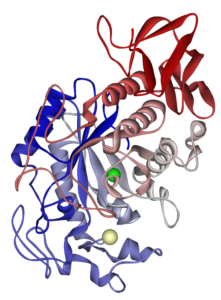
Many fungi secrete it, and it is found in seeds containing starch as a food reserve. It belongs to the glycoside hydrolase 13 family. Saliva contains the digesting enzyme alpha amylase. It breaks down starch’s -1,4 glycosidic bonds. Mastication efficiency is critical for salivary amylase to permeate the meal bolus.
Beta amylase
The enzyme beta-amylase (EC 3.2.1.2, -amylase, saccharogen amylase, glycogenase) is also known as 4-alpha-D-glucan maltohydrolase. The most essential enzyme is beta-amylase, which cleaves two bonded glucose molecules from the reducing end of the chain.

The ability of beta-amylase to create enough maltose, the most significant fermentable sugar, is critical during the first stage of brewing.
γ-Amylase
γ-Amylase is a less commonly utilised enzyme in the food business. It hydrolyzes the final (1-4)glycosidic bond to breakdown starch from the non-reducing end, giving one glucose unit. It can also hydrolyze glycosidic bonds (1-6). In comparison to other amylases, the enzyme has a lower ph optimum. A type of amylase that produces glucose by cleaving the final alpha-1,4-glycosidic connections at the nonreducing end of amylase and amylopectin. It also breaks down alpha-1-6 glycosidic bonds. In acidic conditions, -amylase is most effective (optimum pH of 3).
α-glucosidase
Alpha-glucosidase is a glucosidase that acts on α(1-4) bonds and is found in the brush edge of the small intestine. Starch and disaccharides are converted to glucose by the enzyme alpha-glucosidase.
CGTase
CGTases (cyclodextrin glycosyltransferases) are enzymes that can create cyclodextrins (σ(1->4) connected circular oligoglucosides) from starch.
Gluco amylase
Glucoamylase is a fungal enzyme with 45 carbohydrate side chains, including single mannose residues and mannose, glucose, and galactose oligosaccharide chains.
Salivary amylase
Salivary amylase may be a cleavage enzyme for glucose polymers generated by the salivary glands. It only accounts for a minor a part of total amylase excreted, which is usually produced by the pancreas.
Pancreatic amylase
Pancreatic amylase completes carbohydrate digestion, leading to glucose, a small molecule taken into the bloodstream and transported throughout the body.
Fungal amylases
Aspergillus oryzae produces a kind of alpha amylase called fungal Amylase. There are two types of it: liquid and powder.This fast-acting hydrolase works in the acidic, neutral, and mildly alkaline pH ranges.
Ptyalin
Human salivary glands generate ptyalin, a starch hydrolyzing enzyme. It’s a specific type of salivary amylase. Ptyalin, a salivary molecule, helps the tongue digest starch.
Pullulanase
Pullulanase is a type of glucanase that degrades pullulan. It is an amylolytic exoenzyme. Gram-negative bacteria of the genus Klebsiella generate it as an extracellular, cell surface-anchored lipoprotein.
Amylopullulanase
Amylopullulanases are a type of debranching enzyme that belongs to the glycoside hydrolases (GHs) family of carbohydrate-active enzymes, which is classified by sequence.
Cyclomaltodextrinase
The enzyme cyclomaltodextrinase (CDase) hydrolyzes cyclodextrin to generate linear oligosaccharides with (1,4)-linkages.
Dextran glucosidase
Streptococcus mutans Dextran Glucosidase (SMDG), an exo-type glycoside hydrolase (GH) family 13 glucosidase, hydrolyzes a -1,6-glucosidic linkage at the non-reducing ends of isomaltooligosaccharides and dextran.
Sucrose phosphorylase
Sucrose phosphorylase is a key enzyme in sucrose metabolism and the control of other metabolic intermediates.Sucrose phosphorylases are carbohydrate-active enzymes with exceptional biocatalytic potential for converting regular table sugar into compounds with desirable characteristics.
Debranching enzyme
A debranching enzyme helps the breakdown of glycogen, which serves as a glucose storage in the body, by glucosyltransferase and glucosidase activity. Debranching enzymes, in conjunction with phosphorylases, mobilise glucose stores from glycogen deposits in the muscles and liver.
Alternansucrase
Alternansucrase catalyses the transfer of an alpha-D-glucosyl residue from sucrose to the 6- and 3-positions of the terminal residue of an alpha-D-non-reducing glucan, resulting in a glucan with alternating alpha-1,6- and alpha-1,3-bonds.
Maltooligosyl trehalose synthase
Intramolecular transglycosylation of maltooligosaccharide to maltooligosyl trehalose (alpha-maltooligosyl alpha-D-glucoside) is catalysed by this enzyme.
Trehalose synthase
Trehalose synthase (TreS) is a catalytic enzyme that catalyses the reversible conversion of maltose to trehalose. Bacteria are the principal producers of TreS. Because of the inexpensive cost of the substrate, the simplicity of the reaction, and the high conversion yield, the TreS route is appealing for the synthesis of trehalose.
Amylosucrase
Amylosucrase (EC 2.4.1.4) belongs to the glycoside hydrolases (-amylases) Family 13, but its biological purpose is to synthesise amylose-like polymers from sucrose.
Amylomaltase
Amylomaltase (AM) catalyses the transglycosylation of starch to get linear or cyclic oligosaccharides, which has biotechnological and industrial applications.
Oligo-1,6-glucosidase
The isomaltase–maltase component is in charge of breaking down isomaltose and maltose into two glucose molecules.
Isoamylase
Glycogen 6-alpha-D-glucanohydrolase is the scientific name for isoamylase . Glycogen, amylopectin, and its beta-limit dextrins undergo hydrolysis of alpha-D-glucosidic branch connections. Amylopectin is easily hydrolyzed by this enzyme.
Glucodextranase(GDase)
The enzyme glucodextranase catalyses the hydrolysis of dextran’s glucosidic bonds. N, A, B, and C are the four domains that make up the structure of GDase. Domain A has a six-barrel structure, while domain N has seventeen antiparallel strands. Both domains appear to be concerned with catalytic activity in bacterial glucoamylases (GAs).
Maltogenic amylase
Maltogenic amylase is a type of amylase that breaks down starch into maltose. It may break down starch into smaller molecules in settings where it has lots of substrates to deal with. It’s an endo-amylase, which means it functions at the end of a molecule string.
Neopullulanase
Neopullulanase (EC 3.2.1.135, pullulanase II) is a pullulan 4-D-glucanohydrolase (panose-forming) enzyme of the alpha-amylase family.Neopullulanase, a glycosyl hydrolase isolated from Bacillus stearothermophilus (bsNpl), could be used in the starch and detergent sectors.
Also Read:
